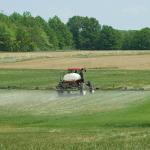Like North Korea, everybody agrees that fake news is a big problem. But also like the Hermit Kingdom, nobody really knows what to do about it.
science journalism
It's not an exaggeration to say that the American public hates the media.
When it comes to food, biotech, and health reporting, the New York Times is at least consistent: It is guaranteed to be wrong every single time.
There has rightfully been much public discussion on how to fight back against the scourge of fake news.
Whether they like to admit it or not, scientists want to have a broad impact on society.
It has been a gruesome few weeks for United Airlines. After making international headlines for dragging a paying customer off a plane, it earned yet more notoriety when a giant bunny died on one of its flights.
"Lying" is considered one of those words civilized people should never say. That's why politicians never use it. Instead, their opponents are "misinformed" or "misspeaking" or "using alternative facts."
A common question I hear again and again is, "How do I know if a news story is fake?" There is no easy answer1.
After more than six years in science journalism, I have reached two very disturbing conclusions about the craft.
Back when I was editor of RealClearScience, Slate's science page was a daily must-read.












